After the linen has been cut and the outines have been transferred to the fabric, the embroidery work can begin. I was too hesitant on my first attempt at design transfer using blue paper. The lines are not very distinctive. Therefore, to be on the safe side, the parts that are particularly important in terms of precise work, such as the bird’s heads and legs, are embroidered very early on, when the outlines are still clearly visible and the embroidery can be implemented very precisely.
The lines of the bird heads are traced with wrapped Chain stitches (coton à broder No. 20). These stitches have a similar effect to Coral Knot stitches, but are a bit more bulky. Here it is important that the Chain stitches are embroidered first – the wrapping can also be done later.
Beaks, bird legs and eyes, small leaves and pomegranate blossoms are embroidered with Satin stitches. Optionally, coton à broder No. 25 or two strands of 6-ply stranded cotton can be used. Stranded cotton has the advantage that the two threads lie next to each other and thus cover the area better than a thread twisted together, but the disadvantage that they shift against each other and the thread tension is not always the same. To avoid this, from time to time while embroidering you have to let the needle slide down to the fabric, bring both strands of thread away from the fabric into the same tension and then push the needle back into its embroidery position.
To taper the thick stems toward the end, start with wrapped chain stitches, then continue the line first with wide stem stitches and finally with single stem stitches (coton à broder No. 16).
The thin stems can be stitched with Coral Knot stitches or with simple Stem stitches.
All areas – apart from those within the plumage – in which threads are withdrawn are first surrounded with Coral knot stitches (coton à broder No. 16).
The plumage of the birds is depicted with different stitches: Stem stitch diamonds with Satin stitch dots or Chain stitches in the middle,
Satin stitch arches and rows of Blanket stitches indicate the wings. The tail feather is worked out with wing stitches.
One bird’s belly is worked using Wave stitches (simple thread withdrawing 3:1 and coton à broder No. 25),
the other using Honeycomb Darning stitches.
The middle parts of the bird heads are embroidered with small Wave stitches over 2 threads (simple thread withdrawing 2:1 and coton à broder No. 25).
The top of the head and neck are decorated with curved lines (coton à broder No. 16).
The middle parts of the large pomegranates (Limet thread withdrawing 3:1 and coton à broder No. 25) are embroidered with Diagonal Cross stitches, the side parts are filled with Chain stitches (coton à broder No. 16). (Chain stitches next to Coral Knots always make them appear more harmonious.)
The small pomegranates and the small leaf motifs get a 2:1 thread withdrawing.
They are filled with Cable stitches or Single Faggot stitches (coton à broder No. 30).
The large leaf motifs get an openwork thread withdrawing 2:2. They are worked out using Cable stitches (coton à broder No. 30). The leaf veins can be indicated with wrapped Chain stitches (coton à broder No. 16).
The embroidery is finished – the work can be washed.
It’s obvious that many of my stitches look a little wobbly. After laundry and careful ironing they look much better.
The second step is done, the pattern is embroidered.
You can find out how to proceed in the next post.
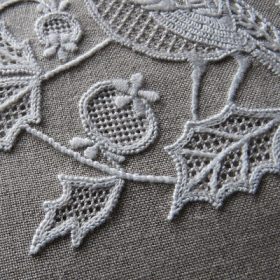
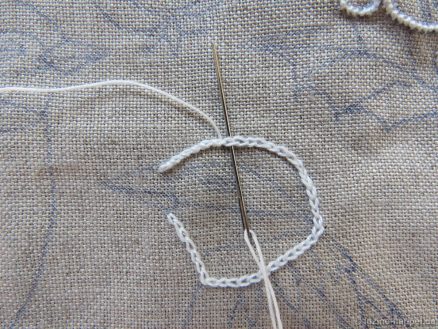
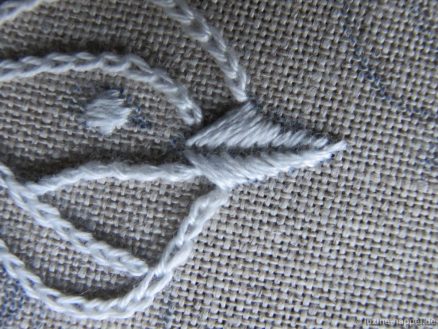
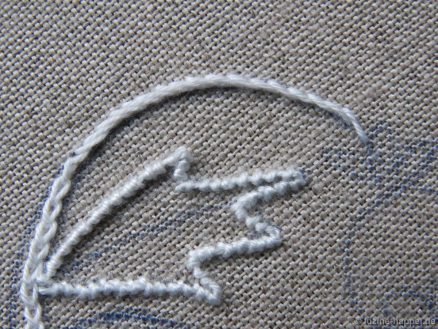
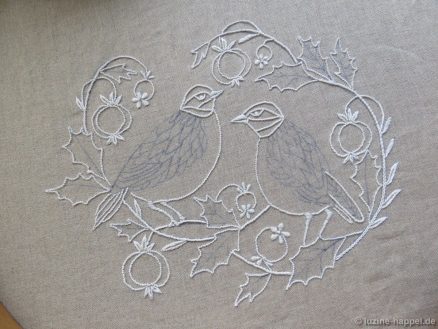
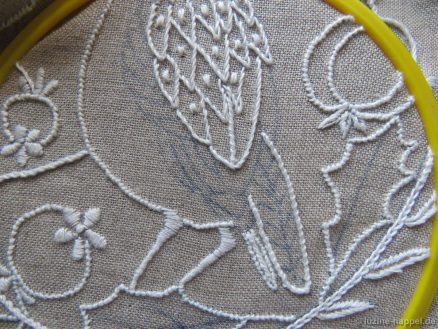
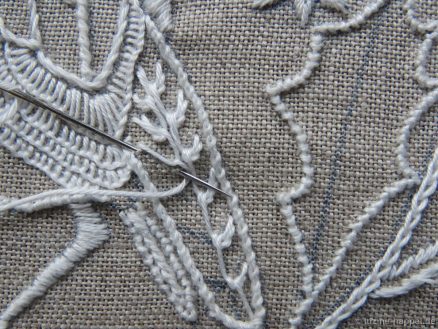
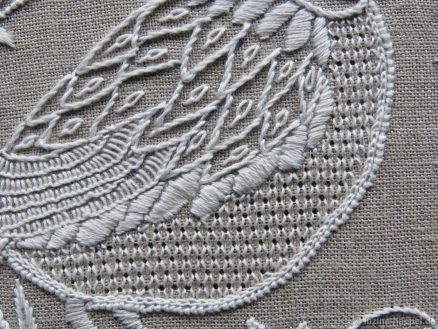
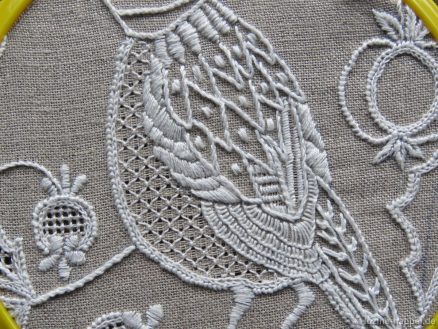
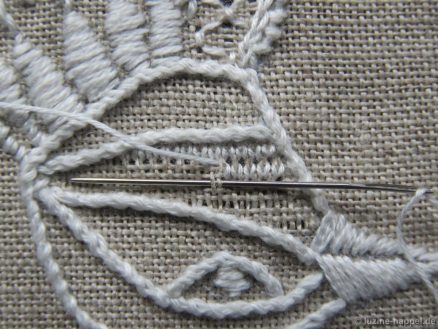
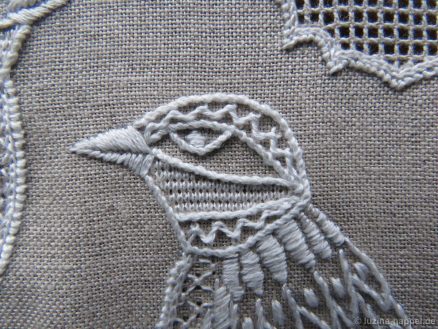
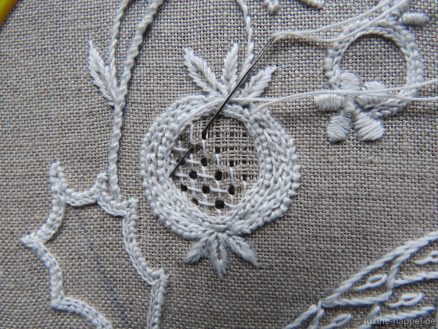
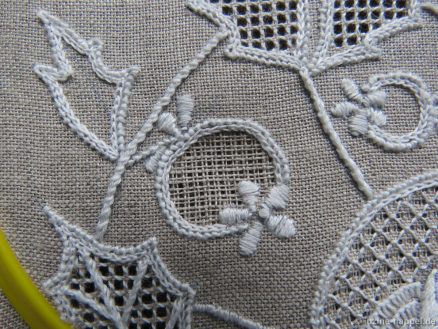
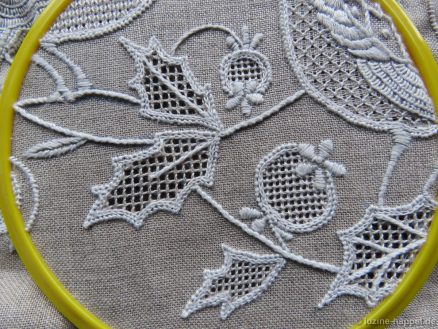
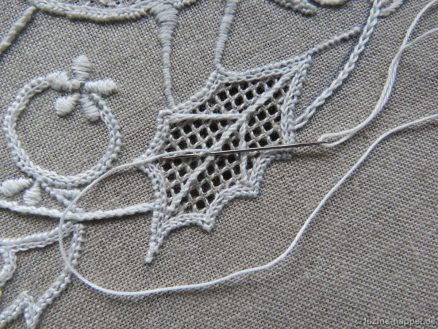
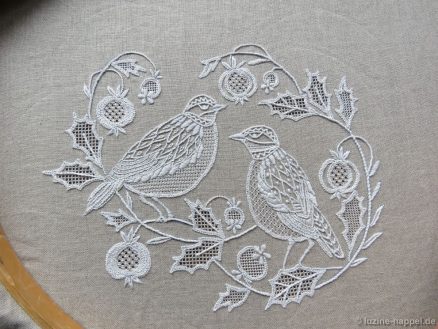
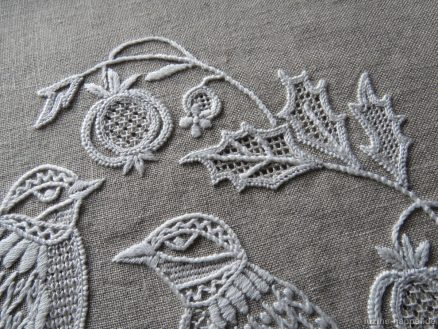
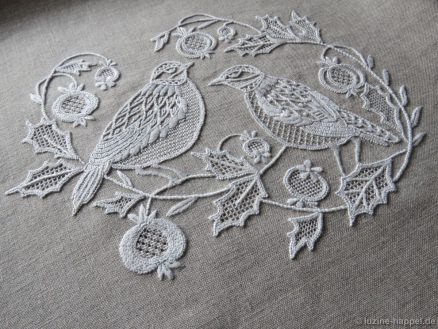


It’s a beautiful design and a lovely combination of stitches